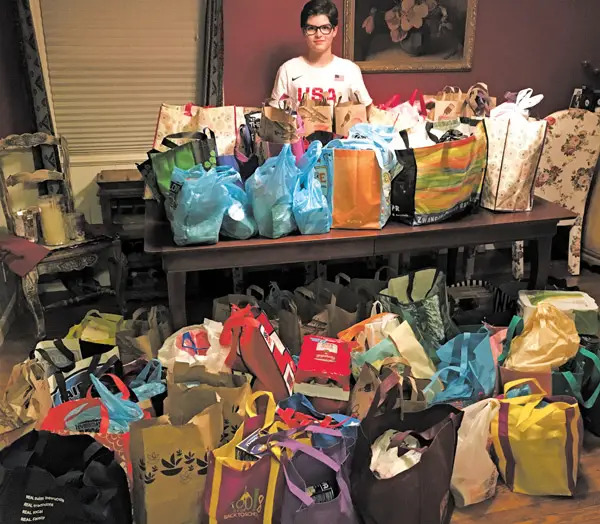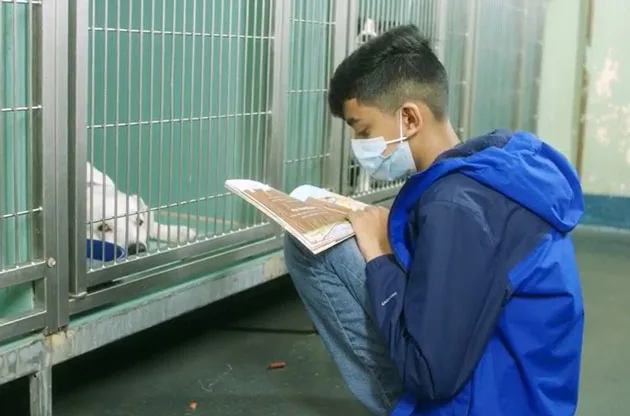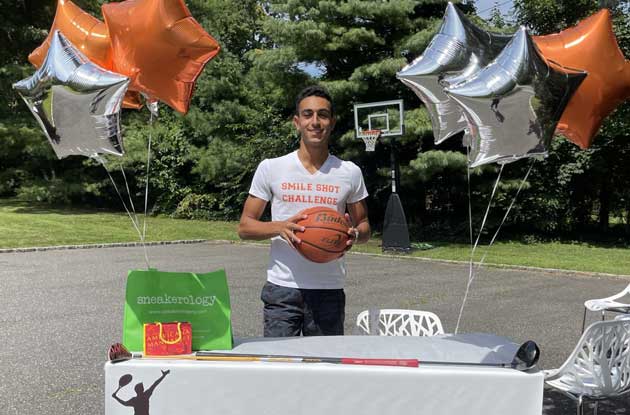When Hannah Taylor was 5, she saw a man searching through a dumpster on the street. She was sad, angry, and kept asking herself, Why? For the next year, that man seemed to be all she could think about. He inspired her to learn everything she could about homelessness. After educating herself, Taylor, who grew up in Winnipeg, Manitoba, took action to help make sure no one else would have to live like that man did. With her parents’ help, at age 8 she founded the Ladybug Foundation, a nonprofit organization that raises money for and awareness about poverty and homelessness. Her motto: “Share a little of what you have and care about each other always.”
“I’ve always lived an incredibly fortunate life,” Taylor, now 21, says. “Always had a bed to sleep in, food to eat, and love and care. I didn’t realize that anybody in Canada had to live a homeless life. It hit me right in the gut. I think that everyone has a moment like that in life. A striking realization that you just cannot let go and forget about. For me, this was it.”
Starting a nonprofit organization is difficult to do at any age, involving a lot of planning and researching, not to mention inevitable challenges implementing even the best-crafted plans. To become a registered nonprofit in the United States, founders need to do their homework about the legal requirements. They’ll need to create a mission statement and business plan, establish an executive board, file for 501(c)(3) tax-exempt status, and more. The process can take multiple years and hit unexpected snags at any point—and that’s aside from the difficulties any individual or group faces in tackling massive problems such as poverty or climate change.
We spoke to several teens and young adults who have successfully navigated these challenges and created their own nonprofit organizations that are still thriving today. They told us how they did it and offered advice for how other kids can follow in their footsteps and make a lasting difference of their own by starting their own nonprofit groups.
Since starting her organization, Taylor has spoken about its work at conferences, schools, and to whoever would listen. Because of her age, her efforts weren’t always successful, and she says many people challenged or doubted her along the way. Taylor recalls a difficult moment when she spoke at a conference and a man stood up and asked, “Do you think that is going to work?” She responded, “Well it’s a good place to start”—and he came back with, “It will work when pigs fly.”
A few months later, she received a letter in the mail from that same man from the conference. He wrote that every day he would pass someone asking for change on the street. “After learning about Ladybug, a voice in his head would tell him to stop and ask how he is,” Taylor says. He ended up having an hour-long conversation with the man asking for change. His views on that man and those living in poverty changed as a result.
“Along with the letter came a cast-iron pig with wings,” Taylor says. “It’s a challenge that you end up learning from. The only way to overcome it is to keep working and hope that you change someone’s mind and hope that they show care and love in another way.”
When starting a nonprofit, there always will be challenges and struggles along the way, but there are also going to be moments when the founders realize their work is changing lives. For Taylor, that moment happened when she was 10. She was on a tour of a homeless shelter so she could understand more about the people who use it. Kids from the shelter would join in on the tour and play with Taylor. “There was one girl, about 15 years old, who was quiet and hung back the whole time,” Taylor says. “Right when I was about to leave, she snuck through a crowd of people and hugged me. She had tears in her eyes and said, ‘Before today, I thought nobody loved me, and now I know you do.’”
For Taylor, it’s essential to see past the challenges and remain focused on the mission, the purpose for which a young person is starting a nonprofit in the first place. “If things get hard or overwhelming or you are facing self-doubt, just remember your job as a change-making leader, and that is to create hope in other people,” Taylor says.
Kids That Do Good
|
|
|
Jake and Max Klein, founders of Kids That Do Good, pose at a school event. |
Max and Jake Klein, 15-year-old twin brothers from Edgewater, NJ, have always loved helping those in need. They spend their birthdays raising money for charities instead of receiving presents. However, every time they wanted to volunteer, they were turned down because of their age. They didn’t want other kids to feel the same way they did, so they decided to do something about it.
When they were 12 years old, Jake and Max founded the nonprofit organization Kids That Do Good. It’s an online platform that helps children of all ages find charities where they are able to volunteer. The website allows you to filter your search by age, location, religious affiliation, and cause. There is also a “Donate” option for people to help support their organization. “When people donate money, we hold it in our account until the end of the month and then donate that money directly to the Charity of the Month,” Jake says.
Max and Jake insist they are just normal kids. The boys go to camp, participate in specialized clubs, and attend a business academy, all while still maintaining their organization. “Our board of advisors helps us make sure organizations we put up on our website are true charities, they help us search things, and they look at information from different angles than we do,” Max says.
The Kleins started out by raising funds for organizations in their town that needed help, but Kids That Do Good has now grown to encompass charities nationwide. In 2015, a fire in Avalon, NJ, displaced 200 local families. Right away, Max and Jake decided to create a website to raise funds for those families. “Everyone responded really quickly and we had such a large outcome that we brought in over $200,000 that we divided up and gave to the families that were affected by the fire,” Jake says.
The boys hope to keep Kids That Do Good up and running for a long time. When they move on to college, they hope to influence other young adults to do good as well. “We want kids to learn that giving back should be a part of everyday life, not just something that they do on a yearly basis when their parents tell them to,” Jake says.
“For anyone that is starting their own website or organization, keep going at it and never give up,” he advises. “Because it could end up being a big thing and you should never give up on your dreams.”
RELATED: Where to Volunteer with Your Kids
A Bar Mitzvah Project Expands
|
|
|
Oceanside teen Cory Nichols with some of the food that will go toward stocking local food pantries |
After watching the documentary Hard Times: Lost on Long Island, Cory Nichols, then age 12, didn’t like knowing there were kids at school who rely on food pantries for their meals. The Oceanside resident decided to devote his bar mitzvah project to raising funds to stock the local food pantry for an entire year. That’s when C the Difference: Cory Cares was born.
Today, Cory is 17 and C the Difference: Cory Cares, is a registered nonprofit organization. It has a junior advisory board made up of kids ages 12-18. The organization “shops and stocks,” Cory says. “We shop for food in the supermarket and then we stock the pantry shelves with food.”
C the Difference: Cory Cares usually stocks five food pantries per month. It holds events to raise funds, such as Halloween for the Hungry, during which volunteers ask people to donate food to pantries that will be picked up at a later date.
Cory says he loves to hang out with friends, play sports, and act in shows. It wasn’t easy for him to start his organization. He had to plan, prepare, and ask for help. “I had my idea and what I wanted to do. I think it all started because I asked for help,” he says. “You need to have your strength in terms of standing by what you believe in and knowing what you want to do, but you also need to be ready to ask someone to help you get to where you want to go.”
Raising money to buy food and then stocking food pantries takes dedication and makes a difference, but actually seeing where the food goes and who benefits from it drives home to Cory the importance of the work his organization does. “In the five years I have been doing this, I never really saw where and to who the food was going to,” he says. “But then when I was volunteering, I actually watched the people who were with me put food together into the bags for the people who were walking in and out to receive them. …Just seeing where everything that I have done is going and seeing that it is going to the right place and making a difference is one of the biggest eye openers for what I started.”
You never know who is going to be there to help you, Cory says. The willingness of the people who wanted to help surprised him. “There is always that worry that I’m not going to raise enough money, that no one is going to volunteer, but then as soon as I gave people the opportunity to, they were so helpful,” he says.
Kids Fighting Kids’ Cancer
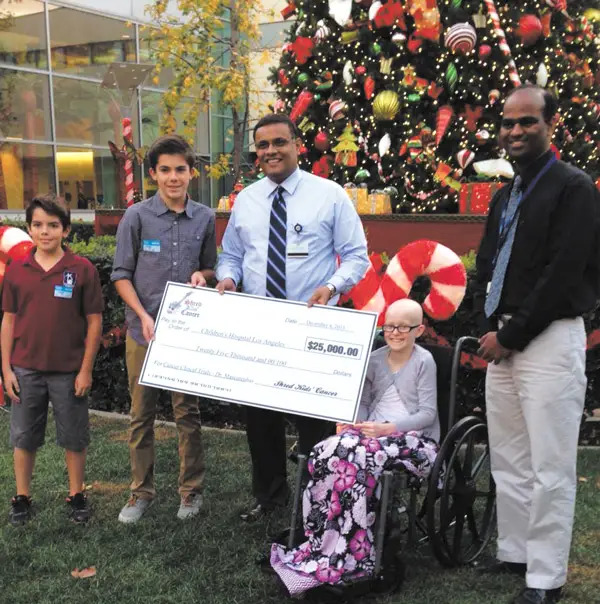 Courtesy Shred Kids Cancer |
|
Teagan Stedman, second from left, presents a check from his nonprofit, Shred Kids Cancer, to Children’s Hospital Los Angeles. |
When Teagan Stedman was 8, his friend Alex Berson was diagnosed with non-Hodgkin’s lymphoma. Instead of just saying “get well soon,” Teagan searched for things he could do to support the fight against pediatric cancer. Not many organizations would allow an 8-year-old to volunteer in hospitals, so he did the only thing that made sense to him—he started his own.
Teagan and Alex both loved music, so what better way to show support than by raising money through music? He decided to plan a concert, a battle of the bands, with different children performing. He says he wanted to literally “shred kids’ cancer,” which is how he came up with the name of his nonprofit organization.
Shred Kids’ Cancer has now been around for almost nine years. It continues to hold battle of the bands and other events to raise money and awareness. Originally from California, Teagan, now 17, moved to Avon, CT, and has continued running his organization there. One of the biggest challenges for him was his age. To get sponsorships and be taken seriously was a struggle because he was so young when he started. “Trying to become a nonprofit was difficult, especially when you have so little knowledge of that world,” he says, adding that the Internet was the biggest help in figuring it out.
Teagan loves to play the guitar, spend time with his family, and work in the lab on his research project. He spent his summer working on drug delivery and cancer research. He says he realized even the smallest things you do can make a difference when Children’s Hospital UCLA was granted a clinical trial. Noah C. Federman, M.D., a doctor at the hospital, was treating one of the “shredheads,” as the children helped by Shred Kids’ Cancer have come to be known. “Dr. Federman told me that the funding we gave was really crucial to their clinical trial because it was the funds that got the ball rolling on their progress, and eventually got them to their million-dollar grant that pushed the clinical trial through,” Teagan says. “That was something that really showed me how that what we were doing was important and actually making some sort of a dent.”
Shred Kids’ Cancer is also working to help kids launch their own start-ups or clubs that will be connected to and partner with the larger organization. Its leaders are setting up a program to give kids guidance so they can be more equipped to start their own organizations. “We really want to be a resource to help guide kids through this process,” Teagan says. “We want kids to set up their own events, awareness campaigns, or clubs at school, or anywhere to benefit pediatric cancer research.”
Advice on Starting a Nonprofit—From Kids Who’ve Done It
Hannah Taylor, the LadyBug Foundation
If you are a young person who is interested in making a difference, you have to try a bunch of new things. Join organizations that people around you think are amazing or that you learn about in class. Often times, trying new things has to happen outside of your comfort zone. Once you find that thing, learn as much about it as you can. People talk about how knowledge is power, but I think that knowledge is only powerful when you turn that knowledge into understanding. I think the next step is that yes, one person can make a difference, but together we can make an even bigger difference.
Jake and Max Klein, Kids That Do Good
If you find something you care about, you will be excited to do it. You will be looking forward to it, and you will also need to ask your parents to help with some of it. Kids aren’t going to be the ones to contact the IRS to become a 501(c)(3) organization, so that will have to be put up on the parents’ end.
Instead of just having a lot of kids involved, you should also have grown-ups so you are diversifying the age groups you have. Make sure you have people that will help you in starting your charity because we have had people help search things, build our website, and more. Always get opinions so you have something else to refer to.
Cory Nichols, C the Difference: Cory Cares
The one thing I’d say to all kids is that there is no idea too small, and you should go for anything you believe in. That was my mindset at 12 and I think it would be totally different if I did it now than at 12. You can’t really see the obstacles or what can go wrong. You just see the possibilities and that is what brought me to where I am now.
You don’t know how good it feels to give back until you do it and giving makes yourself feel so much better. I know how I feel once I walk out of the food pantry, to see the shelves go from empty to not-so-empty. I’ll never be able to fill up a pantry by myself, but just seeing the impact that you do make, makes you feel so good about yourself.
Teagan Stedman, Shred Kids’ Cancer
It can be difficult to get your own community involved with your efforts, but sometimes there is a ton of support through your events and by getting your friends to volunteer.
There is a lot of variability as to how readily people will support your cause, but I think the biggest thing is to be persistent and to be sort of loud in trying to get your community on board.
Try to plan very well. So if you’re trying to hold a fundraising event, make sure you market a lot. That can be a difficult thing to learn, making sure you know how many people you can get to come to your event, try to go around and get sponsorships and things like that. Social media is definitely the most powerful tool for getting the word out.
You have to really try and keep your expenses low. We’ve had events that weren’t that successful, even just with the fundraising aspect. Even though you might be successful in engaging people and raising awareness, be aware because the expenses really hinder your efforts a lot. Venues and services from private people are really hard to control, which is one of the bigger challenges in fundraising.
How to Start a Nonprofit Organization
Do Your Research
There can be a lot of challenges that come with starting a nonprofit organization, so make sure you create a plan and identify everything you need to about your specific organization.
Build a Solid Foundation
You need to build a structure for your organization. Think about who is going to be involved, what you need to do, when you should start, etc.
Incorporation and State Forms
Each state has different laws and protocols for starting a nonprofit, so be sure to research your particular state and ask the appropriate agencies if you have questions.
How to Incorporate a Nonprofit
- Choose a name for your organization, but make sure to check your state’s laws for naming a nonprofit.
- Create a board of directors, along with operating rules.
- Decide on a legal structure—is your organization going to be a trust, corporation, or association?
- Hand in your incorporation paperwork—you must file all the proper paperwork and pay a small filing fee to your state.
- Apply for tax-exempt status—the IRS provides guidance and instructions on how to apply for this status.
- Get necessary licenses and permits—did you get all of the necessary licenses and permits that you need to comply with federal, state, and local rules?
Filing for Federal Tax-Exempt Status
Does your organization have the appropriate legal paper work? To be considered for exemption, the IRS must recognize you as a trust, a corporation, or as an association.
Ongoing Compliance
In some states, local governments require you to complete additional filings to be recognized as tax-exempt. Make sure you check with your local legal counsel to ensure you have all of the initial filing requirements.
Main image: Hannah Taylor started The Ladybug Foundation when she was 8.
Courtesy the Ladybug Foundation











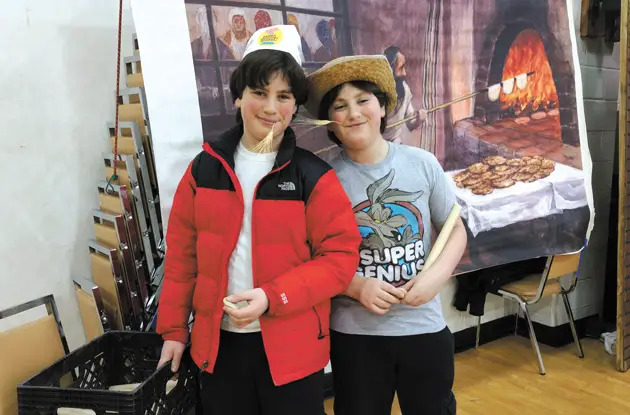 Courtesy the Klein family
Courtesy the Klein family